
Lewis Wickes Hine was an American sociologist and muckraker photographer. His photographs were instrumental in bringing about the passage of the first child labor laws in the United States.

Photojournalism is journalism that uses images to tell a news story. It usually only refers to still images, but can also refer to video used in broadcast journalism. Photojournalism is distinguished from other close branches of photography by having a rigid ethical framework which demands an honest and impartial approach that tells a story in strictly journalistic terms. Photojournalists contribute to the news media, and help communities connect with one other. They must be well-informed and knowledgeable, and are able to deliver news in a creative manner that is both informative and entertaining.
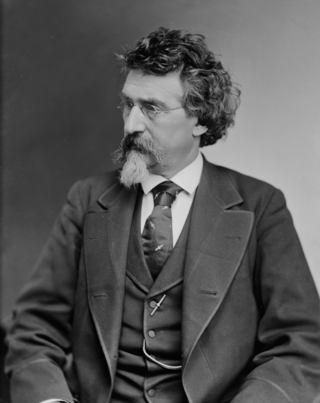
Mathew B. Brady was an American photographer. Known as one of the earliest and most famous photographers in American history, he is best known for his scenes of the Civil War. He studied under inventor Samuel Morse, who pioneered the daguerreotype technique in America. Brady opened his own studio in New York City in 1844, and went on to photograph U.S. presidents John Quincy Adams, Abraham Lincoln, Millard Fillmore, Martin Van Buren, and other public figures.

A photo booth is a vending machine or modern kiosk that contains an automated, usually coin-operated, camera and film processor. Today, the vast majority of photo booths are digital.

Street photography is photography conducted for art or inquiry that features unmediated chance encounters and random incidents within public places, usually with the aim of capturing images at a decisive or poignant moment by careful framing and timing. Although there is a difference between street and candid photography, it is usually subtle with most street photography being candid in nature and some candid photography being classifiable as street photography. Street photography does not necessitate the presence of a street or even the urban environment. Though people usually feature directly, street photography might be absent of people and can be of an object or environment where the image projects a decidedly human character in facsimile or aesthetic.
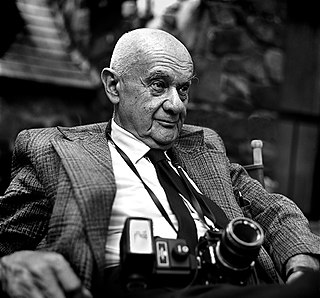
Roman Vishniac was a Russian-American photographer, best known for capturing on film the culture of Jews in Central and Eastern Europe before the Holocaust. A major archive of his work was housed at the International Center of Photography until 2018, when Vishniac's daughter, Mara Vishniac Kohn, donated it to The Magnes Collection of Jewish Art and Life at the University of California, Berkeley.

Hugh Welch Diamond was an early British psychiatrist and photographer who made a major contribution to the craft of psychiatric photography.
Photography in China dates back to the mid-19th century with the arrival of European photographers in Macao. In the 1850s, western photographers set up studios in the coastal port cities, but soon their Chinese assistants and local competition spread to all regions.
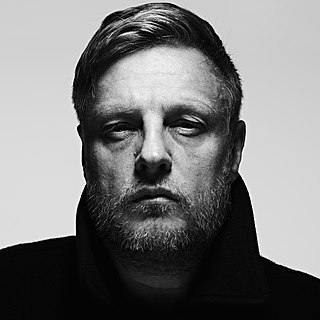
John Rankin Waddell, known as Rankin, is a British photographer and director who has photographed, amongst other subjects, Björk, Kate Moss, Madonna, David Bowie and Queen Elizabeth II.
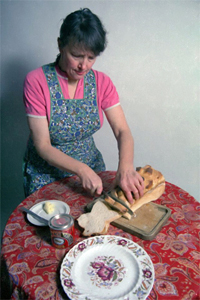
Jo Spence was a British photographer, a writer, cultural worker, and a photo therapist. She began her career in the field of commercial photography but soon started her own agency which specialised in family portraits, and wedding photos. In the 1970s, she refocused her work towards documentary photography, adopting a politicized approach to her art form, with socialist and feminist themes revisited throughout her career. Self-portraits about her own fight with breast cancer, depicting various stages of her breast cancer to subvert the notion of an idealized female form, inspired projects in 'photo therapy', a means of using the medium to work on psychological health.
Joel Sternfeld is an American fine-art photographer and educator. He is best known for his large-format color pictures of contemporary American life and identity. His work contributed to the establishment of color photography as a respected artistic medium. Sternfeld documents people and places, furthering the tradition of roadside photography started by Walker Evans in the 1930s.
The following outline is provided as an overview of and topical guide to photography:
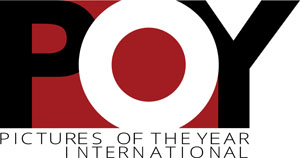
Pictures of the Year International (POYi) is a professional development program for visual journalists run on a non-profit basis by the Missouri School of Journalism's Donald W. Reynolds Journalism Institute. POYi began as an annual competition for photojournalism in 1944. POYi promotes the work of documentary photographers and magazine, newspaper, and freelance photojournalists.

Anna-Lou Leibovitz is an American portrait photographer best known for her portraits, particularly of celebrities, which often feature subjects in intimate settings and poses. Leibovitz's Polaroid photo of John Lennon and Yoko Ono, taken five hours before Lennon's murder, is considered one of Rolling Stone magazine's most famous cover photographs. The Library of Congress declared her a Living Legend, and she is the first woman to have a feature exhibition at Washington's National Portrait Gallery.
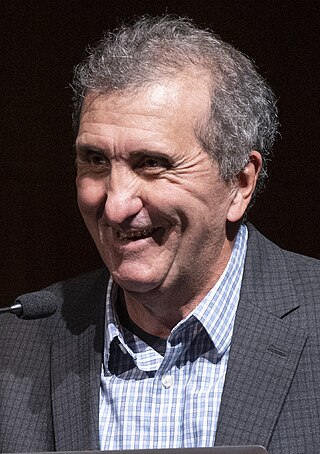
Peter Joseph Souza is an American photojournalist, the former chief official White House photographer for Presidents of the United States Ronald Reagan and Barack Obama and the former director of the White House Photography Office. He was a photographer with The Chicago Tribune, stationed at the Washington, D.C., bureau from 1998 to 2007; during this period, he also followed the rise of then-Senator Obama to the presidency.

Walter Ernest Stoneman was an English portrait photographer who is known for taking photographs for the National Portrait Gallery (NPG) in London.

The participation of women in photography goes back to the very origins of the process. Several of the earliest women photographers, most of whom were from Britain or France, were married to male pioneers or had close relationships with their families. It was above all in northern Europe that women first entered the business of photography, opening studios in Denmark, France, Germany, and Sweden from the 1840s, while it was in Britain that women from well-to-do families developed photography as an art in the late 1850s. Not until the 1890s, did the first studios run by women open in New York City.
Ralph M. Hattersley, Jr. (1921-2000) was an American photographic educator, commentator, journalist and photographer.

Photography in Sudan refers to both historical as well as to contemporary photographs taken in the cultural history of today's Republic of the Sudan. This includes the former territory of present-day South Sudan, as well as what was once Anglo-Egyptian Sudan, and some of the oldest photographs from the 1860s, taken during the Turkish-Egyptian rule (Turkiyya). As in other countries, the growing importance of photography for mass media like newspapers, as well as for amateur photographers has led to a wider photographic documentation and use of photographs in Sudan during the 20th century and beyond. In the 21st century, photography in Sudan has undergone important changes, mainly due to digital photography and distribution through social media and the Internet.
Del Loewenthal is an Emeritus professor of psychotherapy and counselling at the University of Roehampton, London. He is also Chair of the Southern Association of Counselling and Psychotherapy and Founding Editor of the European Journal of Psychotherapy and Counselling.















